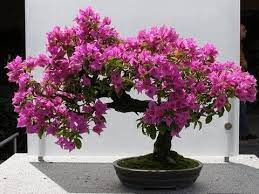EUROPEAN OLIVE 

The olive is a tree commonly found in Mediterranean countries, with a long cultivation tradition and symbolic importance. Since the 4th millennium BC, it has been cultivated for its fruit.
There are two commonly used Olive species in Europe for bonsai – the European Olive (Olea europea) and the Mallorcan Olive (Olea europea var. silvestris), commonly referred to as Ullastre. The standard European Olive has heavy, hard deadwood and slightly large leaves, whereas the Mallorcan Olive has much more striated deadwood and incredibly small leaves. Both, however, make excellent bonsai tree material.
Olive trees are well-ramified evergreen trees or shrubs and, depending on the variety can become up to 10 or even 20 meters (33 to 66 ft) tall. Wild olive trees, called oleaster, are smaller than cultivars. The leaves are silvery-grey and narrow lanceolate to elliptic. The olive tree grows very slowly but can become several hundred or even a thousand years old. Old trees develop a rough bark and gnarled trunks. The small yellowish-white flowers are followed by green drupes which turn black when they get ripe and contain a single hard seed each. Olive fruits are edible after they are watered and kept in brine for some time, but most of them are used for producing olive oil.
For bonsai, you can use cultivated varieties but the wild olive Bonsai (Olea europaea sylvestris) has the advantage of very tiny leaves and short internodes. In many cases, yamadori oleasters possess beautiful natural deadwood and a lovely rough bark that indicates a high age and survival in hostile conditions. The olive is easy to care for if you can place it in a cold but frost-free greenhouse in winter.
With its strong and sturdy trunk, the European Olive Bonsai captivates enthusiasts with its timeless beauty and resilience. The meticulous training and pruning techniques employed by bonsai artisans result in delicate yet captivating branches and leaves.
Beyond its visual appeal, the European Olive Bonsai holds deep cultural roots. In Mediterranean cultures, the olive tree is considered a symbol of peace, prosperity, and wisdom. Its association with longevity and endurance makes it a popular choice among bonsai enthusiasts seeking to reflect these qualities in their living art.
The cultivation of European Olive Bonsai entails meticulous care and patience. It requires an ideal balance of sunlight, watering, and nutrient-rich soil to ensure its healthy growth. This commitment to nurturing the tree parallels the harmony sought between nature and human effort in bonsai practice.
The olive bonsai needs a place with full sun which also helps to reduce the size of the leaves. It can withstand temperatures slightly below 0° C / 32° F but must be protected from stronger frost. It is best to place the olive tree in a cold greenhouse which is kept frost-free. If kept in a warm room in the house in winter the olive will suffer from lack of light and dry air which makes it very susceptible to scale.
Strong pruning, if necessary, should be done in late winter. The olive will respond with vigorous growth in the following spring. It can also bud from old wood. When the new shoots grow too long, cut back to one or two pairs of leaves. Very healthy specimens can also be defoliated to promote fine ramification. Younger branches and new shoots can be wired at any time. Old branches are stiff and brittle and hard to bend.
Repot in spring before the buds begin to swell, every two or three years and remove about a third of the roots. Old trees can be repotted at longer intervals. Use a well-draining soil mix with a slightly alkaline pH value (7 – 8).
In conclusion, the European Olive bonsai is a remarkable choice for both beginners and experienced enthusiasts alike. With its sturdy and beautiful trunk, small leaves, and ability to withstand different weather conditions, this bonsai offers a unique and authentic charm to any collection. Whether you are looking for a stunning centerpiece or a symbol of peace and longevity, the European Olive bonsai is sure to captivate your heart and provide endless joy and fulfillment. Don’t miss the opportunity to embark on a rewarding journey with this extraordinary bonsai tree.
Katlin Mulligan
Sources
https://www.bonsaiempire.com/tree-species/olive
https://greenzenbonsai.com/european-olive-bonsai/
https://www.bjornbjorholm.com/care-and-maintenance-guide-for-various-european-olive-bonsai/


